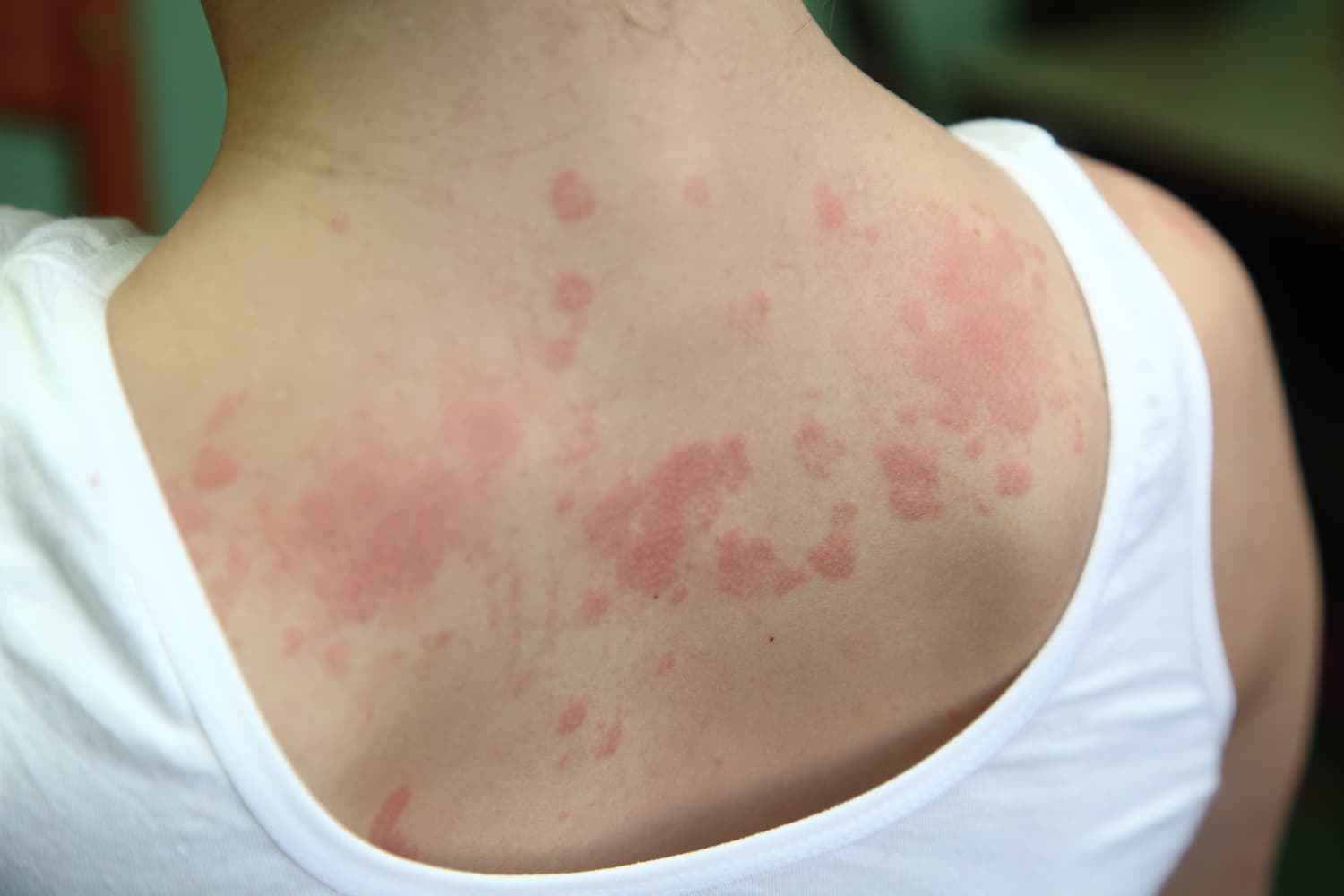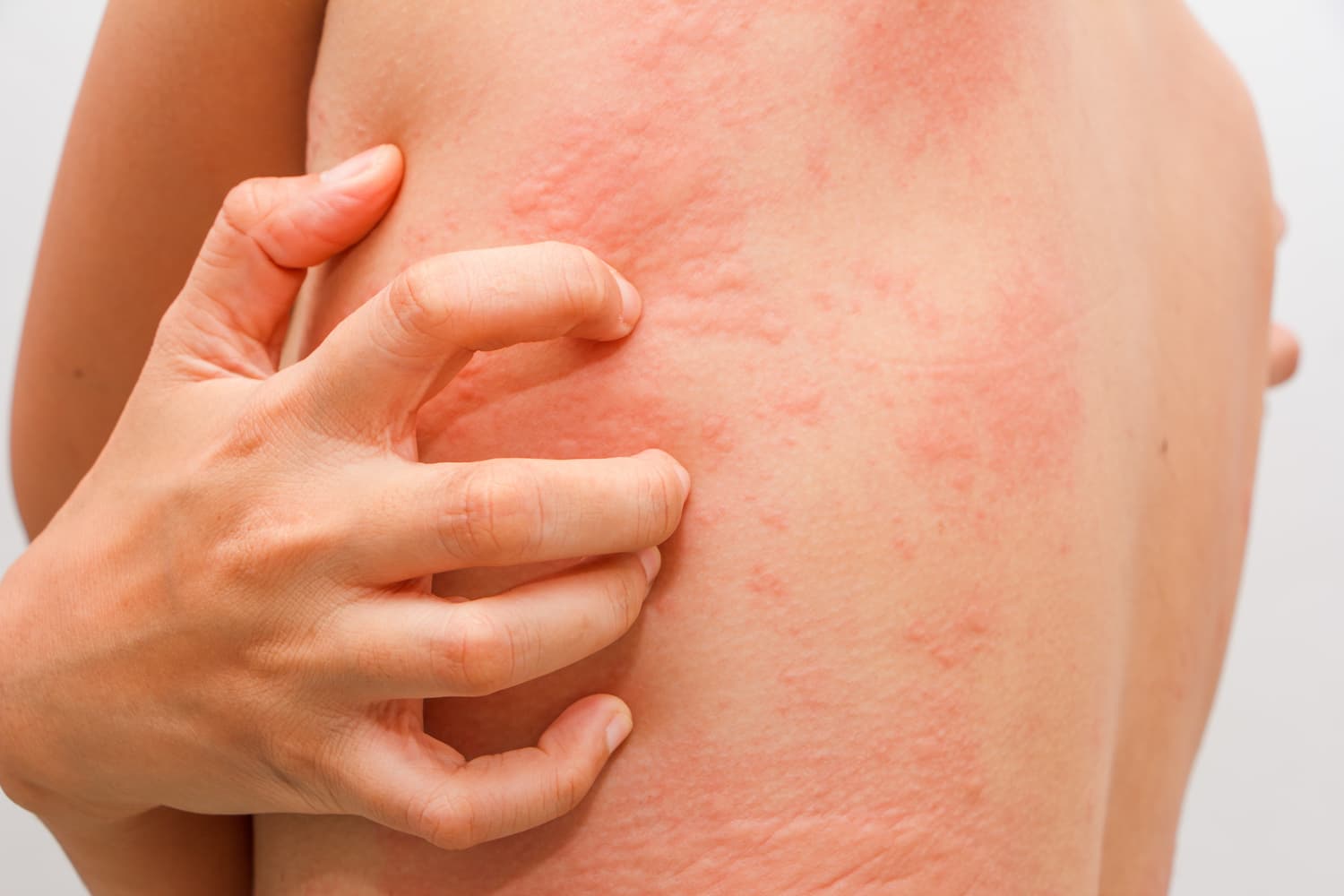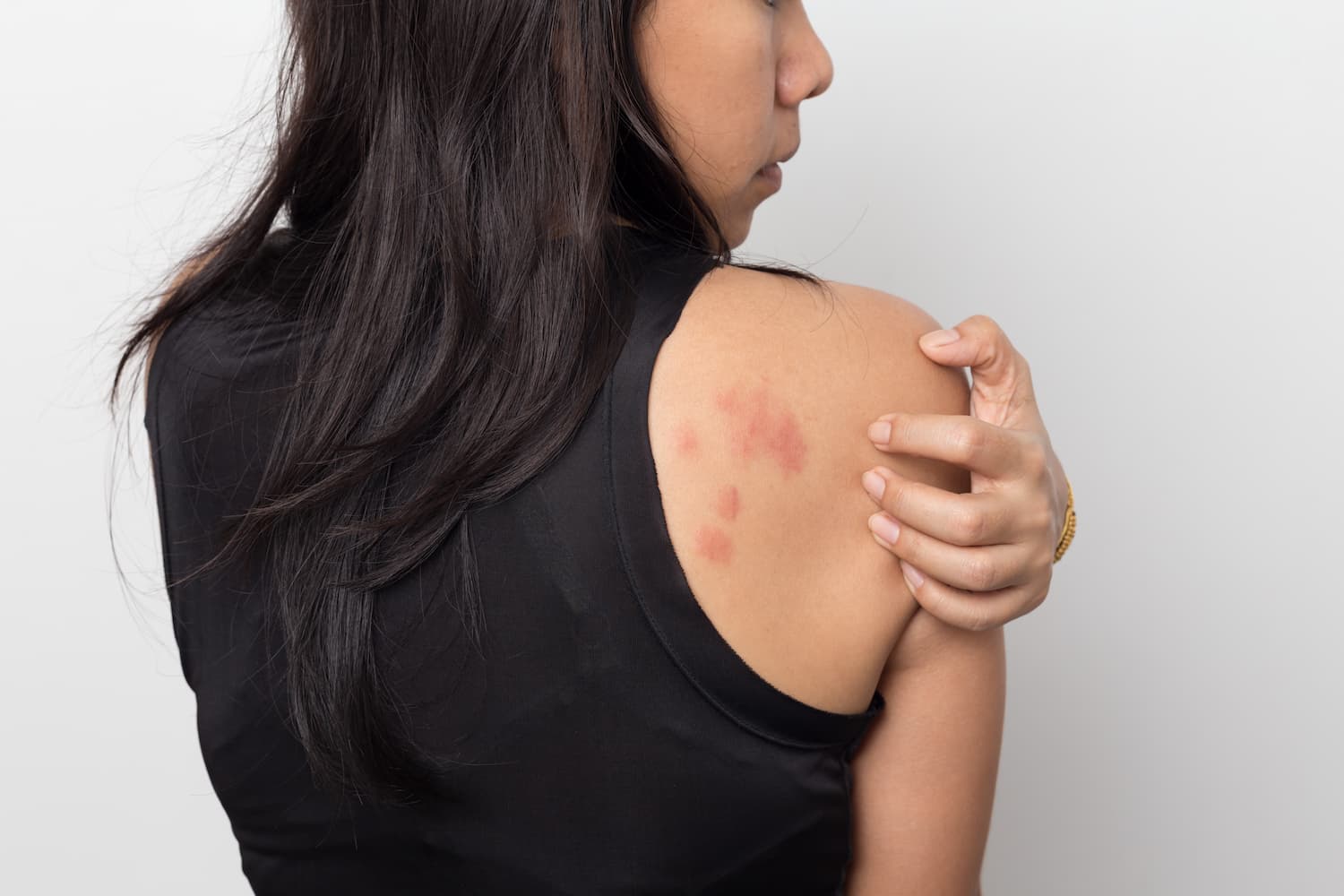What is urticaria?
Urticaria is a condition where you get short-lived, itchy skin swellings known as hives or weals and typically any individual weal will clear within 24 hours although the overall rash may last for longer.
Angioedema is a form of urticaria in which there is deeper swelling in the skin, and the swelling may take longer than 24 hours to clear. The visible angioedema typically presents with facial swelling (eyelids, mouth, tongue) or genital swelling. Angioedema can affect internal organs (airways) usually during an anaphylactic episode
Urticaria is very common and 20% of people would have had urticaria at some point in their lives.


Why does urticaria or angioedema develop?
The weals /swellings of the skin and subcutaneous tissues occur when a substance called histamine is released by cells in the skin called mast cells. The release of histamine and other molecules makes the skin itchy and swollen.
An affected individual may have urticaria alone, angioedema alone, or both together. When angioedema occurs in association with urticaria, the two conditions can be considered part of the same process. When angioedema occurs on its own, different causes need to be considered. (e.g. angioedema caused by taking ACE-inhibitors or familial angioedema)
Urticaria is classified according to its duration.
- Acute urticaria (< 6 weeks duration, and often gone within hours to days)
- Chronic urticaria (> 6 weeks duration, with daily or episodic weals)
Chronic urticaria may be Spontaneous (no obvious trigger) or Inducible
How is urticaria diagnosed?
- The clinical presentation of the weals is usually very typical.
- If there is a strong suspicion of a food allergy from the history and the repetitive presentation of symptoms, an allergy test called skin prick test can be useful. For all other (the majority) urticaria cases, the skin prick test is not performed because it’s not helpful.
- Sometimes a blood test may be necessary
- A skin biopsy is usually not helpful as it can confirm urticaria but doesn’t tell us the cause of it.

Treatments for inflammatory urticaria
- When there is an obvious trigger: avoidance of trigger factors is usually sufficient
- If there is no obvious trigger, we manage the urticaria with medication.
Oral second-generation antihistamine
If the standard dose (eg 10 mg for cetirizine) is not effective, the dose can be increased up to fourfold (eg, 40 mg cetirizine daily). They are stopped when the acute urticaria has settled down. There is not thought to be any benefit from adding a second antihistamine.
These are some examples of antihistamines.
- Cetirizine
- Loratadine
- Fexofenadine
- Desloratadine
- Levocetirizine
Although systemic treatment is best avoided during pregnancy and breastfeeding, there have been no reports that second-generation antihistamines cause birth defects. If treatment is required, loratadine and cetirizine are currently preferred.
Oral steroids
Oral steroids can be given as a short course for a few weeks to control the symptoms.
Ciclosporin
Medication that suppresses the immune system such as Ciclosporin may be beneficial for most severely affected individuals.
Biologic (injection), omalizumab
A new Biologic (injection), omalizumab, has been recently approved for the most severe cases, where all other treatments have failed. This treatment is only available in specialist clinics.
Moisturisers
You can also help to soothe the skin using plain (non-perfumed) moisturisers or moisturisers containing menthol such as menthoderm or dermacool.
Where can I find more information on urticaria & angioedema?
www.bad.org.uk click on Patient Information leaflets



